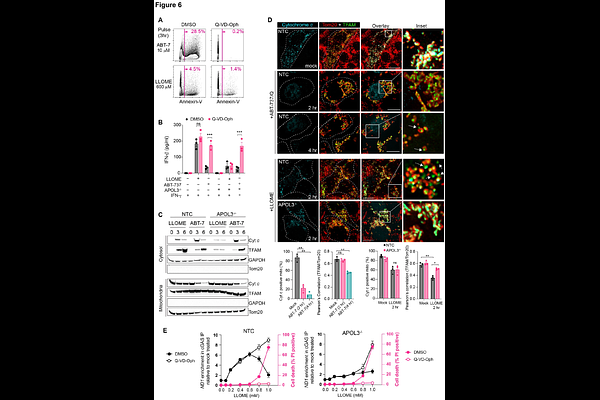The antibacterial factor APOL3 couples lysosomal damage to mitochondrial DNA efflux and type I IFN induction

The antibacterial factor APOL3 couples lysosomal damage to mitochondrial DNA efflux and type I IFN induction
Ritacco, D. A.; Shahnawaz, H.; Oduguwa, A.; Hawk, J. S.; Vizcaino, B.; Farber, D. L.; Gaudet, R. G.
AbstractLysosomal damage is an endogenous danger signal to the cell, but its significance for innate immunity and how specific signaling pathways are engaged by this stressor remain unclear. Here, we uncover an immune-inducible pathway that connects lysosomal damage to mitochondrial DNA (mtDNA) efflux and type I IFN production. Lysosomal damage elicits mitochondrial outer membrane permeabilization (MOMP) via BAK/BAX macropores; however, the inner mitochondrial membrane (IMM) prevents wholesale mtDNA release in resting cells. Priming with type II IFN (IFN-gamma) induced the antibacterial effector apolipoprotein L-3 (APOL3), which upon transient lysosomal damage, targets mitochondria undergoing MOMP and selectively permeabilizes the IMM to enhance mtDNA release and activate cGAS/STING signaling. Biochemical and cellular reconstitution revealed that analogous to its bactericidal detergent-like mechanism, APOL3 solubilizes cardiolipin to permeabilize the IMM. Our findings illustrate how cells use an antibacterial protein to expedite the breakdown of endosymbiosis and facilitate a heightened response to injury and infection.